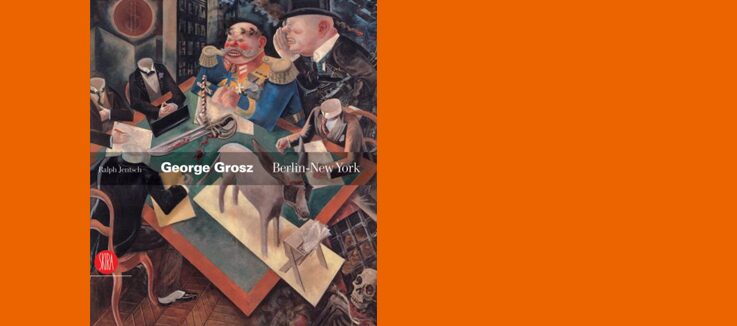Last year, at the end of February, I visited Germany for the first time.
I landed in Munich and then went by train to Cologne and Berlin. A Jew’s first visit to Germany is no small matter, even today: it remains fraught with apprehensions, neuroses, and a kind of bitter, sorrowful indignation.
I wasn’t immune to these feelings, but I didn’t want them to define my experience of the country. There was much I was curious about, and much I wanted to see. History shuffles its deck and deals an unpredictable hand. For instance, the same Russian Jews who had fled Hitler and served in the Red Army, now quite happily called Germany home. My godfather and his dentist wife had retired to a nice townhouse in the suburbs of Cologne. My mother’s cousin—a former member of the Soviet Communist party, whose father had been killed on the eastern front, and whose stepfather had been a commissar in the NKVD—lived with his wife in a tidy one-bedroom apartment in Berlin. They enjoyed bicycling to the Tiergarten and regularly attended art galleries, museums, and all manner of cultural events. For the three days I was in the Berlin, they served as my indomitable guides: Grisha and Doba Vinogradov, two diminutive Russian-Jewish pensioners, veterans of 47 years of marriage, who bickered and contradicted each other from Potsdamer Platz to Schloss Charlottenburg—this too was Germany.
While in Berlin, one of the places I most wanted to visit was the Neue Nationalgalerie, whose permanent collection boasts a large number of works by Weimar-era artists. Like many people, I am intrigued by the era, with its blend of idealism, decadence, and impending doom. I’d seen this peculiar existence rendered in the work of Max Beckmann, a painter I admire, and I’d gone to the Neue Nationalgalerie to see some of his canvasses firsthand. Along with Beckmann I saw also the beautiful, caustic, and ingenious works of Christian Schad, Otto Dix, Emile Nolde, and George Grosz. Some of these artists, like Dix and Grosz, were vaguely familiar to me, others, like Schad and Nolde, I’d not encountered before. I left the gallery wondering what had happened to them during the Nazi period.
When I returned home, I did some investigating and discovered, among other things, that George Grosz—whose painting The Pillars of Society had greatly impressed me—had published a biography in 1946, entitled A Small Yes and A Big No. He'd written it in America, where he lived from 1932 until 1959. It is among the best memoirs I have ever read. It pleads no special case, and doesn’t try to settle scores or justify choices. Instead, like the best memoirs, it reads like the account of a man who reflects upon his life and finds it to be as odd, puzzling, and curious as does the reader.
Grosz is best known as a political artist, and the book mostly reflects upon these two intertwined strands of his life: politics and art. Politically, he harbored no romantic illusions either about the noble ruling classes or the underprivileged masses.
“My observation has shown,” Grosz wrote, “that the masses are nothing but a herd of sheep who can contentedly be led to choose their own butcher.”
In 1933, at a dinner with Thomas Mann and his wife, Grosz voiced the then-unpopular opinion that Hitler “was worthy of the Germans who had elected him” and that he would last not six months, as many then believed, but more like six years. He reported Mrs. Mann’s reply:
“’Shame on you, Mr. Grosz, you must be a horrid man even to be able to imagine such a thing!’ For emphasis, she excitedly grabbed my arm. I suddenly noticed with horror, that her nails had become sharp, like those of a cat.”
As an artist, he was equally pragmatic. After achieving renown in Germany and abroad, he nevertheless found it difficult to establish himself in America. He freelanced for a handful of magazines. He taught at arts schools. For a time, he operated his own small school. To attract students, he penned advertisements such as: “Cezanne knew how to make an apple out of nothing. YOU can learn that too!” (What artist hasn’t had to resort to one variation or another of this advertisement in his darkest hours of need?)
The Grosz who emerges in the memoir is intelligent, principled, and charming. He engages in no posturing or self-aggrandizement, even though he lived through turbulent times and acted—compared to many of his contemporaries—with great courage and conviction.
Describing himself, he wrote:
“… I had the courage to voice what so many were thinking. Madness, probably, rather than courage. What I saw filled me with disgust and contempt for people. Everybody around me was afraid; I was afraid too, but not afraid to resist this fear. I could write pages about this much-discussed subject, but everything I have to say can be seen in my drawings.”
 David Bezmozgis © David Franco
David Bezmozgis,
David Bezmozgis © David Franco
David Bezmozgis,
Toronto
